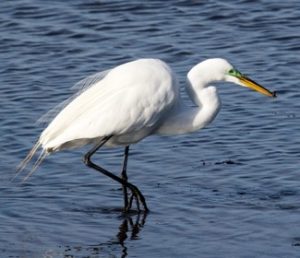Little Skate
Leucoraja erinacea

Physical: The little skate is dark brown or splotchy grey, with a white to grey underside. They are cartilaginous fish, like rays, with large wing-like fins. Little skate have thorny spines on the shoulders, tail, and back. They also have an electrosensory organ in their head and can generate weak electric fields, which they use to locate food and communicate with other skates. Adults grow up to 20 in (50.8 cm), and their wingspan grows up to 21 in (53.3 cm).
Habitat: Their range spans from Canada to North Carolina. Little skate primarily live in deeper waters than the Barnegat Bay, so any individuals found in the Bay are strays from the continental shelf. They prefer sandy or gravelly bottom and migrate between depths for the summer and winter.
Feeding: Little skate eat crabs, shrimps, worms, sea squirts, molluscs, squid, and small fishes.
Breeding: Little skate reproduce throughout the year, with peaks from October-December and from April-May. Females lay 10-35 eggs over the course of a year, depositing them on sandy or muddy flats, or attaching them to seaweed. The egg cases are rectangular, with stiff horns on the corners. You may have seen the empty cases on a beach before. Eggs take 5-6 months to hatch.

Sign up for email or connect through social media.